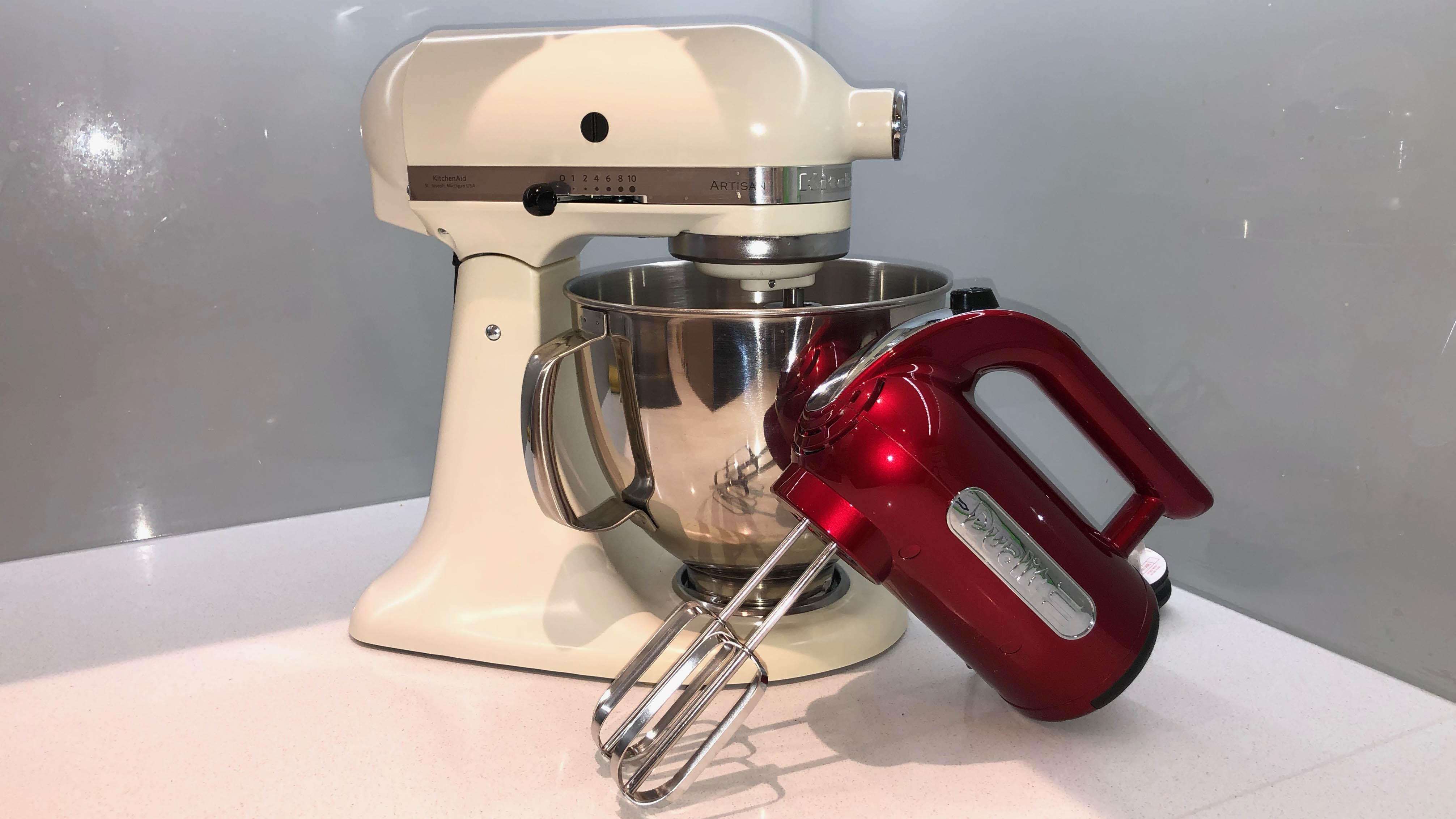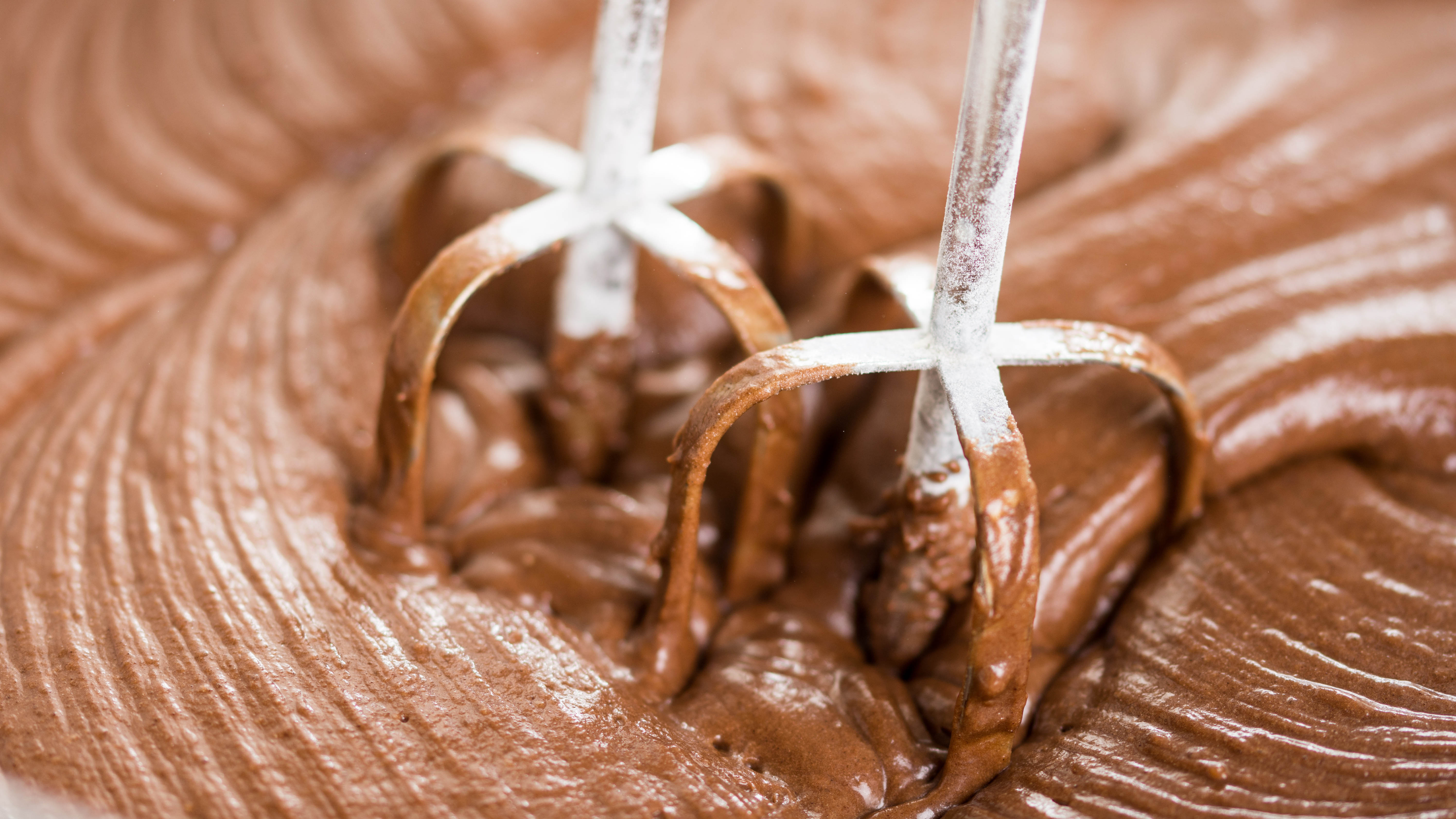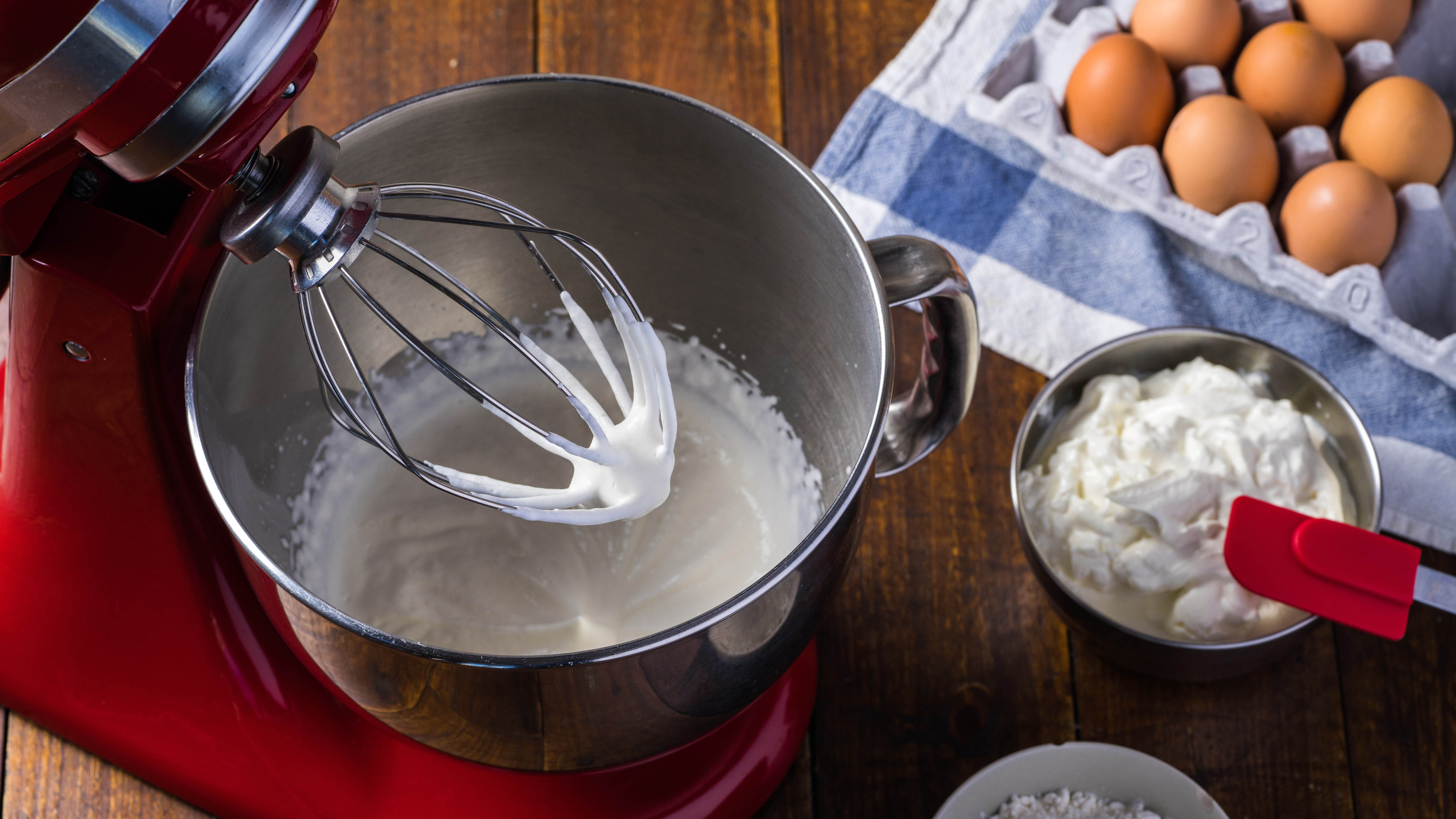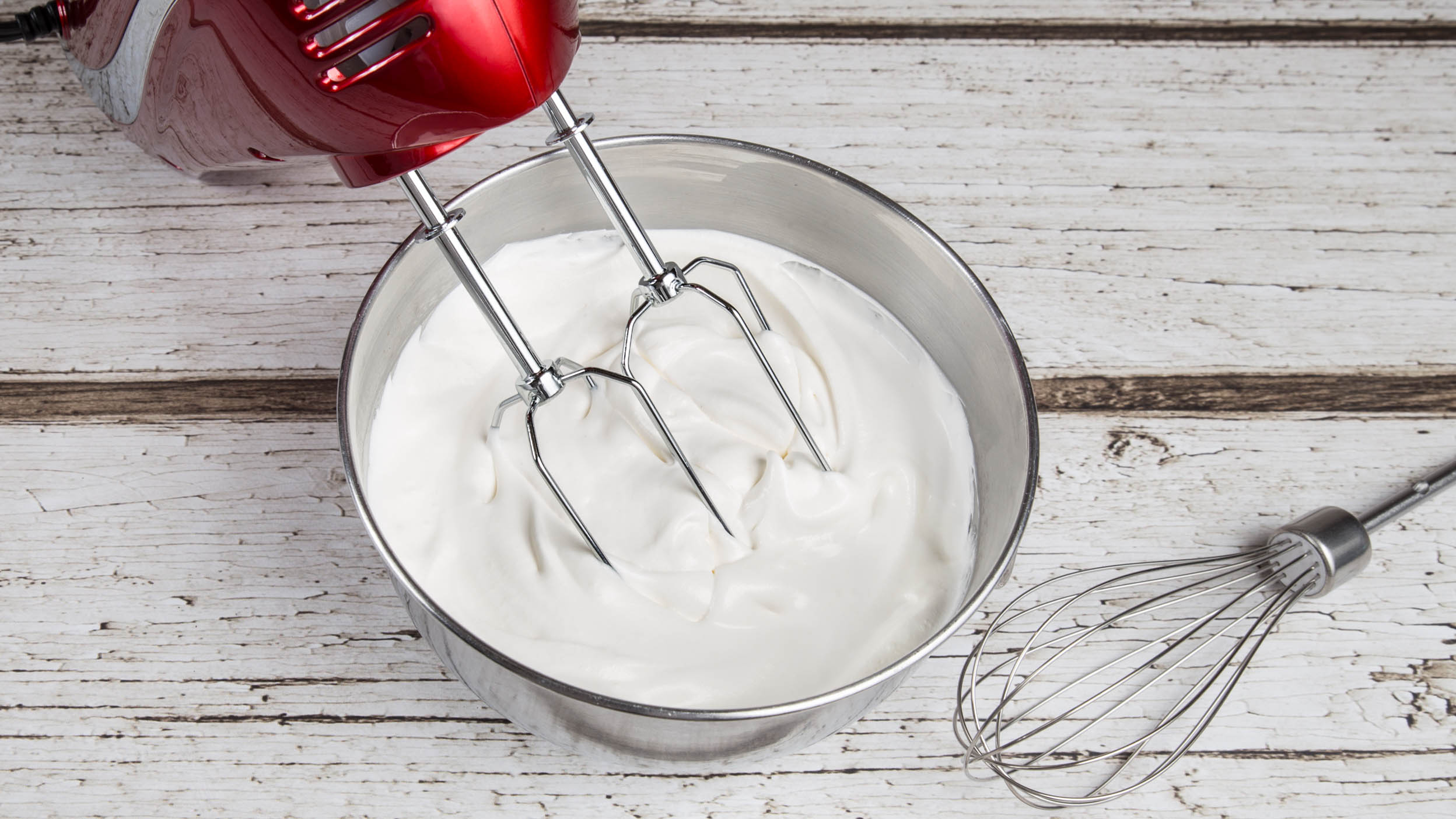Hand mixer vs stand mixer — which is better?
Here are the pros and cons of a hand mixer vs a stand mixer

The best stand mixers and hand mixers are designed to take the effort out of combining ingredients. These will provide a much smoother and more consistent result than you would ever achieve by hand, plus they’re much faster, saving you both time and effort. So there’s little reason not to have one of these machines if you love to bake. The question is: which is better — a hand mixer or a stand mixer? Here we will take you through the pros and cons hand mixers vs. stand mixers to help you decide.
If you love all things KitchenAid, KitchenAid’s new Blossom stand mixer color is a show-stopper. You may also be interested in reading the KitchenAid Artisan stand mixer is my best kitchen purchase ever — here's why and 5 KitchenAid attachments to get the most out of your mixer and where to buy them.
Hand mixer vs. stand mixer — the fundamentals
Before we take you through the pros and cons of each, you need to understand the fundamental differences between a hand mixer and stand mixer. While they serve a similar purpose, the intention behind each design is very different.
A hand mixer is a handheld appliance which you hold directly above the bowl as it mixes. It comes with a pair of metal beaters, but some models also come with dough hooks and whisk attachments, which make the appliance more versatile. There’s usually a couple of speeds to choose from as you mix, and the attachments are often dishwasher-safe for ease of cleaning.
These are designed with convenience in mind above all — the idea is you can quickly grab a hand mixer when you need it as you bake. Hand mixers can cost as little as $20, so they’re pretty accessible, whatever your budget.

A stand mixer, on the other hand, is a much more sizable appliance. It ‘stands’ on a countertop, and you add ingredients directly to the bowl as you mix, by either tilting the head or lowering the bowl.
Stand mixers have larger motors than hand mixers and offer more power when mixing, combining tough blends such as dough and fruit cake with ease. They’re not as quick to use, but they will generally offer a more consistent result because of the power.
Most stand mixers come with a beater, dough hook and whisk as standard attachments, although some models come with additional tools such as ‘scraper’ beaters and splash guards. Some stand mixers, such as KitchenAid’s iconic Artisan stand mixer, can even function as alternative appliances, such as food processors, pasta makers and mincers, so the versatility can be endless.
These are naturally the more expensive option, with the cheapest models starting from $120. You can also find mini-stand mixers which often have a smaller capacity for less than this, but in our experience, you’re better off going for full size, or opting for a hand mixer.
Stand mixers: Pros and cons

Pros:
- Can handle large capacities — anywhere from 3.5 to up to 7 quarts.
- Can operate independently — You can continue prepping ingredients while your stand mixer does the work. All you need to do is start and stop it.
- More power — Generally more powerful and offers more speed settings than a hand mixer for better control and more consistent results.
- Versatility — Some come with special features and more versatile designs. Some stand mixers have built-in scales while others feature a light to let you see in the bowl as you work.
- Attractive designs can be nice to display — Some brands, such as KitchenAid, offer a huge range of colorways to suit kitchen themes.
Cons:
- Heavy and bulky to store — Most people generally leave their stand mixer on display as the weight makes them impractical to lift in and out of cupboards.
- More pricey option of the two — some can cost more than $600.
Hand mixers: Pros and cons

Pros:
- More lightweight and maneuverable — Most just weigh a couple of pounds and can be held by one hand as you work.
- Quick to set up and use — simply plug it in, attach the beaters and you’re good to go.
- Great for small, light and quick jobs, such as sponge cake — The results for this kind of mixture will be much the same as if you used a stand mixer.
- Much cheaper option — as much as five times cheaper.
- Easy to store — The cord can be wrapped around the appliance or stored via the cord storage. Some come with cases to hold the attachments as well.
Cons:
- Not as much power — Some can struggle with heavier jobs such as dough as they don’t have as much power.
- More labor — You need to hold the mixer above the bowl as it works, which can cause strain over time.
- Can get messy — The ingredients aren’t as contained as if you were to use a stand mixer. Plus, a hand mixer can drip when you place it down to add ingredients to the bowl.
Should I buy a hand mixer or a stand mixer?
Both stand mixers and hand mixers serve a similar purpose, but with entirely different designs. Whether you opt for a hand mixer vs. a stand mixer depends on which recipes you produce as well as how often you plan to use the mixer. If it’s only for the occasional small batch of cookie dough, then a hand mixer will be more than sufficient. However, if you want to mix and knead your own pizza dough on a weekly basis, then save yourself some effort and opt for a stand mixer.
If you regularly prepare a variety of recipes, then buying one of each isn’t a bad idea. That way you can use whichever is best suited to the job.
We hope this guide has helped you to make a decision between the two — check out the best electric ranges for the best results when you bake. Also see what happened when Smeg's retro stand mixer was tested for two weeks.
Sign up to get the BEST of Tom's Guide direct to your inbox.
Get instant access to breaking news, the hottest reviews, great deals and helpful tips.

Katie Mortram used to be a Homes Editor for Tom's Guide, where she oversaw everything from kitchen appliances to gardening tools, as well as smart home tech. Specializing in providing expert advice for cleaning and home manintenance, she now works as Household Advice Editor for Good Housekeeping.
